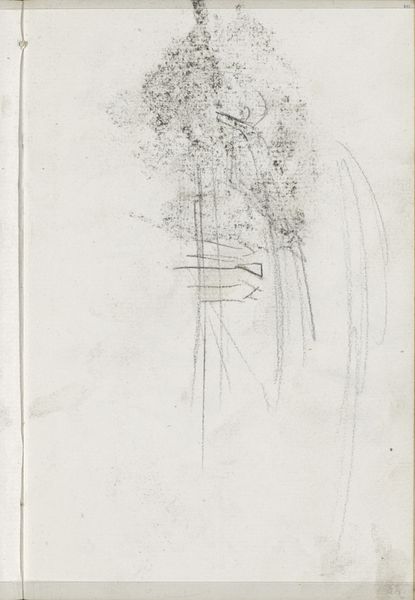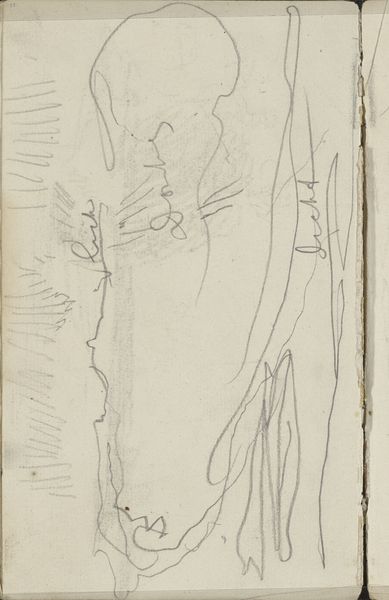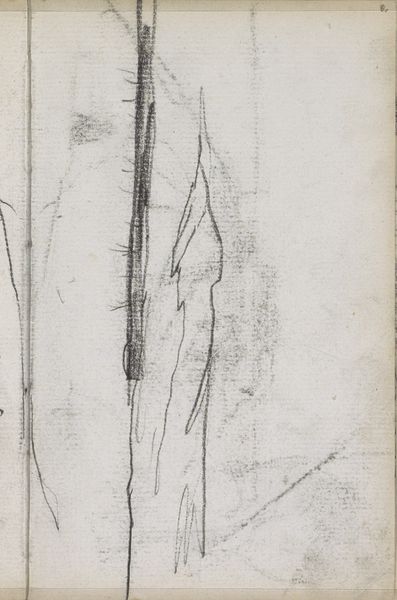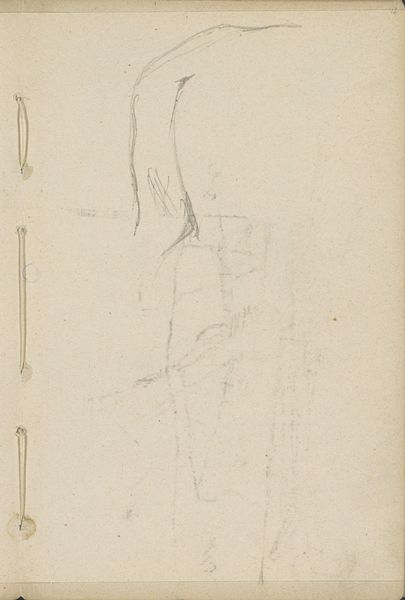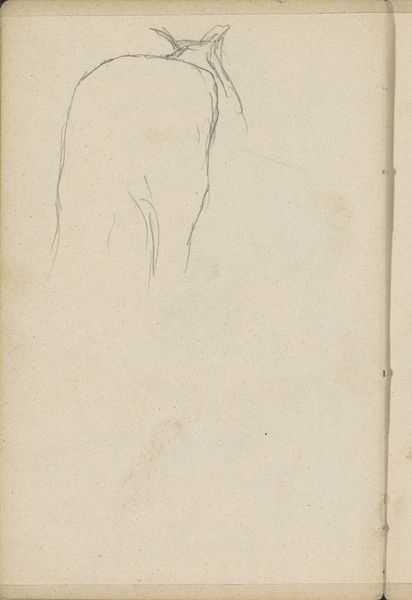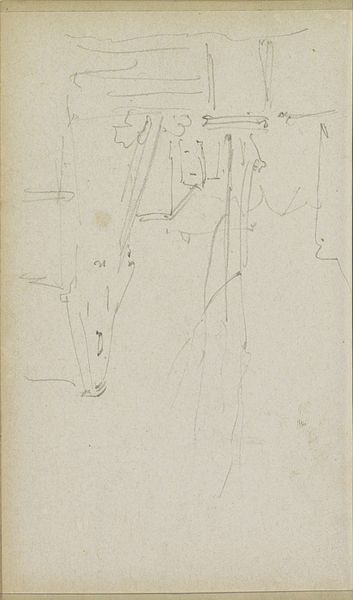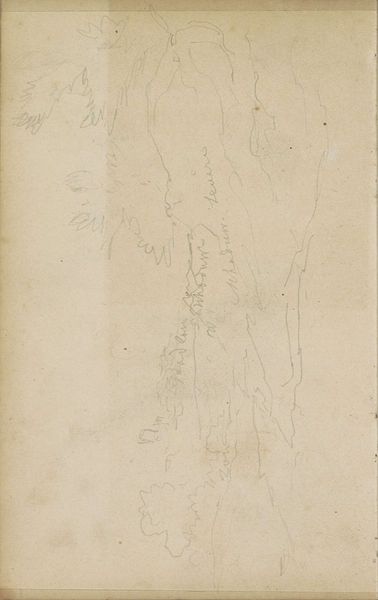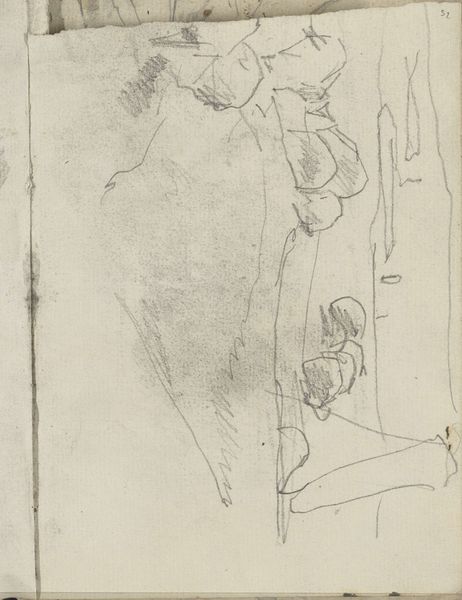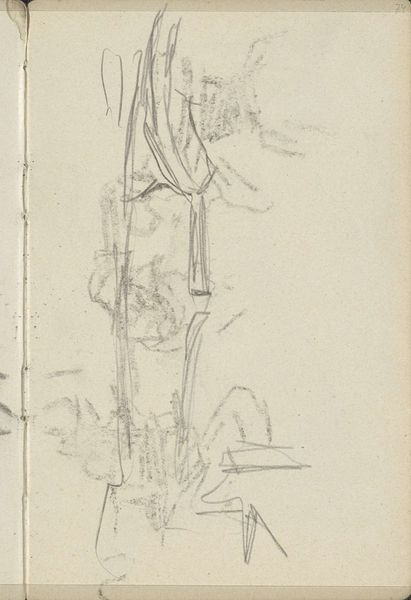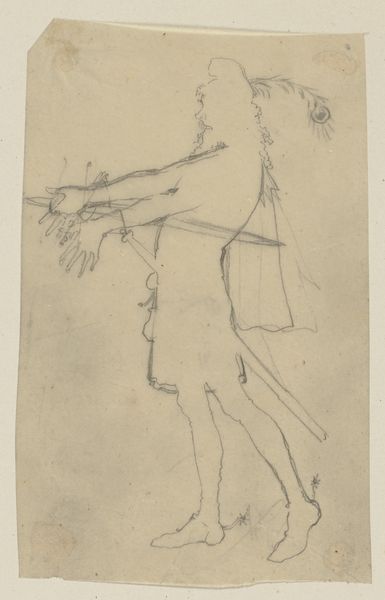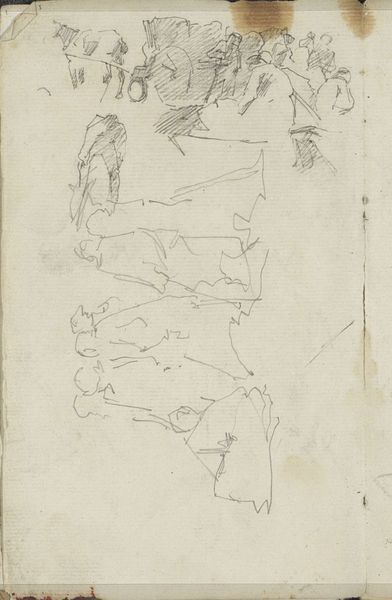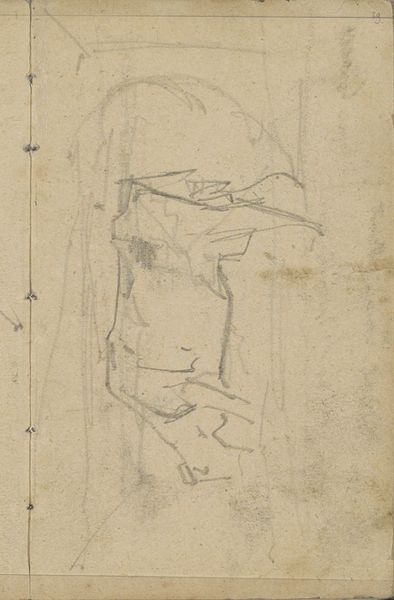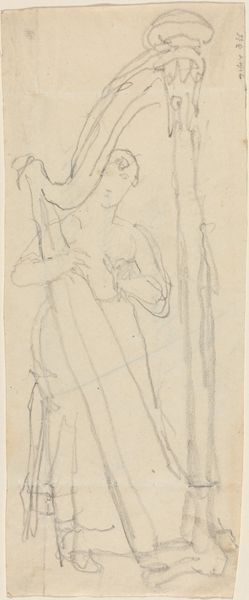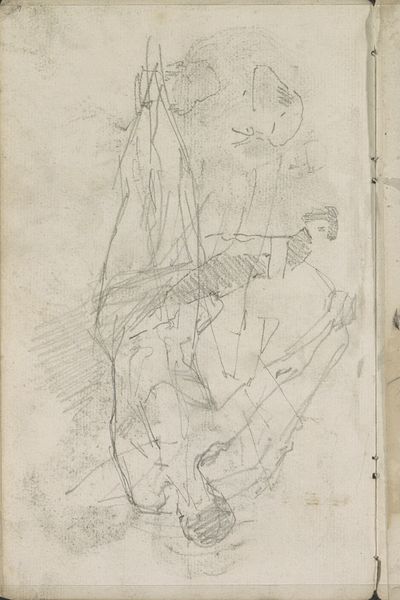
drawing, pencil
#
drawing
#
pencil sketch
#
landscape
#
romanticism
#
pencil
Copyright: Public Domain: Artvee
Editor: Here we have Théodore Géricault's "Studies of Clouds," made with pencil sometime between 1812 and 1814. It's quite minimal, a flurry of tentative lines. I find myself feeling a strange calm looking at it, like watching a storm brewing from a safe distance. What strikes you most about this drawing? Curator: It's that immediacy, isn't it? You see Géricault grappling with the ephemeral. It's not just clouds he's capturing, but the *moment* of the clouds, the transient dance of light and shadow. Look at the way he uses these quick, almost frantic, pencil strokes to suggest the shifting forms. Editor: Almost like he's racing against time. Do you think he intended it to be seen like this, so unfinished? Curator: Ah, that's the lovely question, isn't it? I suspect this was more of an exercise, a personal exploration. Back then, academic painting demanded precise studies from life – sketches were raw data. But there's a raw power in this study precisely *because* of its sketch-like nature. It allows us to glimpse into Géricault's artistic process, his immediate, unfiltered response to the natural world. Editor: That makes sense. It's fascinating to see such a direct connection to the artist's thinking. Curator: Absolutely. For me, it’s a reminder that sometimes the greatest beauty lies in the incomplete, the suggested. The space it leaves for *our* imaginations to fill is what makes it truly resonate. Editor: It's amazing how something so simple can hold so much. Thanks for shedding light on it! Curator: My pleasure! Art, like clouds, is best enjoyed with an open mind and a willingness to get lost.
Comments
No comments
Be the first to comment and join the conversation on the ultimate creative platform.
